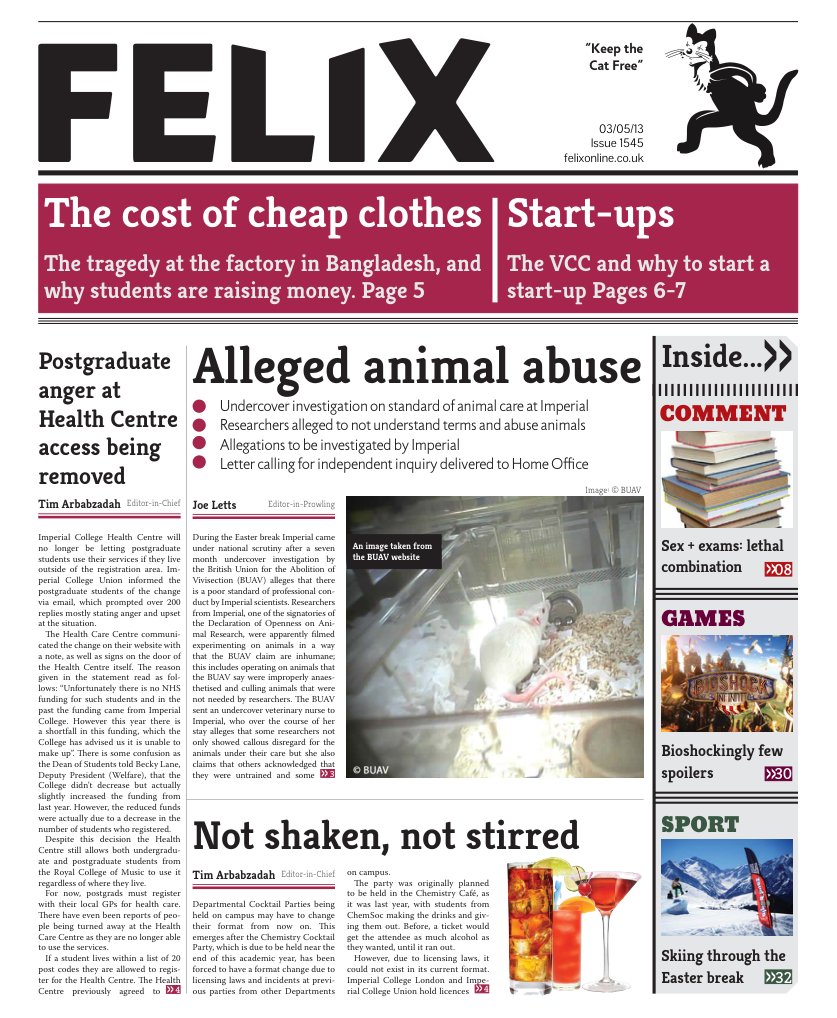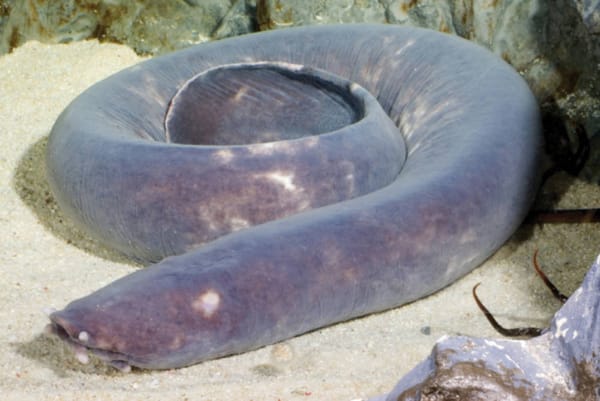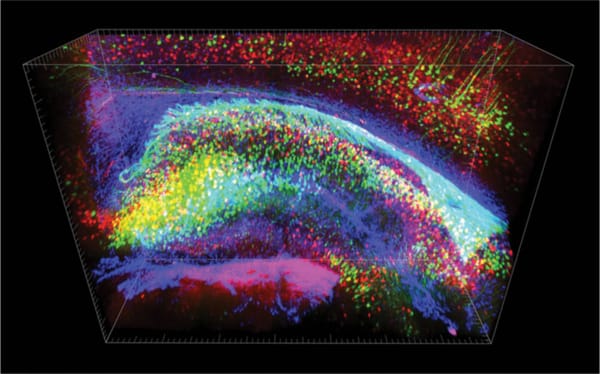What you missed in Science
Felix Science recaps what went on in the world outside revision and the library. Just to annoy you, we've not gone for the non-alphabetical order of the names.

Biology
Viruses have been getting out of hand this Easter, with the H7N9 outbreak reaching 104 in humans throughout China and 21 lives being claimed by this strain of avian influenza virus. Although there is no evidence of sustained human-to-human spread so far, with China being the epicentre of both the outbreaks and a busy hub for airline traffic, it may be only a matter of time before this bird flu takes to the skies – literally, it could be coming to an airport near you.
In more positive news, new protein on the scene, CD33, a little-known regulator protein, has been found to prevent support cells clearing toxic plaques that result in Alzheimer’s disease.
Suppression of such a protein may contribute to future treatments for the disease. Not only that: a new liver hormone called betatrophin has been discovered that encourages growth of insulin-secreting cells, which could be manipulated for future diabetes treatment development. High-fives all round for the immunologists out there.
And lastly, we celebrated the 60th anniversary of the Double Helix, with the original paper describing the DNA structure being published in Nature on the 25th of April, 1953. If any molecule deserves a birthday party, DNA is it. mRNA, the smaller, more active yet unloved sibling of DNA celebrates its birthday sometime in October, but it seemed that no-one even cared enough to record the date properly, so this was probably the only biomolecule birthday worth watching out for this year.
DOI: 10.1016/j.neuron.2013.04.014
Physics
NASA have had a busy Easter break- in the past month, their probe on NASA’s Cassini spacecraft spotted a hurricane on Saturn two thousand kilometres wide, alongside capturing photos for the first time of meteoroids crashing into Saturn’s rings. A top month for NASA; not so much for Saturn.
Theoretical physicists got busy measuring antigravity, leaving us pondering if anti-matter atoms fall up, whilst pesky pyrrole molecules were also seen to be making the rules up as they go along.
The impact of quantum laws of physics has been seen to now exert effects at a molecular level, with pyrroles moving over metal surfaces in a manner contradictory to classical physics. It was initially thought that zero-point energy – residual, undetectable energy in the quantum world that means nothing is perfectly still – did not apply to whole molecules, but pyrroles defied this in recent tests in the Cavendish Laboratory in Cambridge. Back to the drawing board guys!
And finally, someone spotted what looked like a penis drawn by the Mars exploration rovers Spirit and Opportunity whilst looking for water on the red planet.
Although this was claimed to be a complete accident, anyone who has ever come within a mile radius of Imperial knows that scientists never really grow up. We are all kids at heart, just with access to lasers, chemicals and the odd bio-hazardous bacterial strain.
Somewhere out there, an astrophysicist is quietly chuckling to himself, after completing the ultimate doodle in this solar system.
Chemistry
Chemists have been takingimagery to a new level this Easter, with them deciding that there is no such thing as “too small,” when it comes to viewing scale, if nothing else.
X-ray single-crystal diffraction, that molecular structure determination method that we all know and love, saw a revamp at the beginning of April.
Scientists from both Japan and Finland established a new protocol for the method to no longer require crystallisation of the target molecule before analysis. Molecules can now be as small as 80ng for studying by this diffraction method, so if you have that speck you have been dying to identify handy, now is your chance.
STAM, or Saturated Transient Absorption Microscopy, also hit the chemical scene towards the end of last month. This new imaging system, using three laser beams, allows for super-resolution optical microscopy, and overcomes the issue of the diffraction limit that hinders usual light microscopy.
Images are generated using STAM by comparing the contrast between excited and ground state electrons in molecules when excited upon illumination instead, making it possible to study nanomaterials, again if nothing else, in much greater detail.
Rice University also found out this month that when squeezing the liquid phase of silicone, it gets surprisingly stiff when repeatedly and gently compressed, although polymer scientist Rafael Verduzco declined to comment on whether or not such research was inspired by more intimate moments he has had outside the lab.
In conventional silicones, polymer chains are usually randomly orientated that allow for a return to their usual state after compression. In liquid phase silicone, it was found that the chains are organised in rod shaped coils and are initially randomly orientated. Repeated compression leads to them rotating and pointing in the same direction however, contributing to the stiffness.
With silicone being a biocompatible material, incorporating this new information back into the bedroom may occur within the foreseeable future, if some adventurous biologists fancy getting on board too.
I don’t want to specifically suggest penis-related ideas, but if the self-stiffening silicone glove fits...
DOI: 10.1038/nature11990
DOI: 10.1038/ncomms2772









